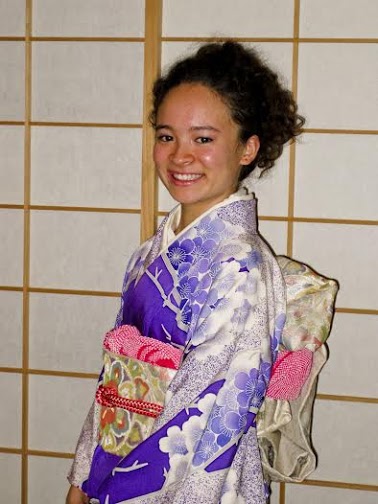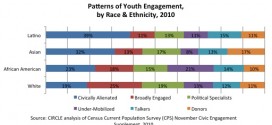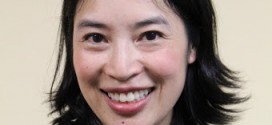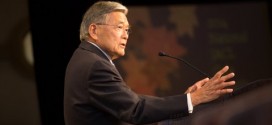By Tamara Treichel
In this era of globalization and liberalization, being – and identifying as – biracial is becoming increasingly common. Yet only a few decades ago, unions between the races which may lead to biracial offspring were punishable by law in different countries. Think about Nazi-era Germany and eugenics, where Rassenschaender (“defilers of race”) were paraded through the streets for marrying or having intimate relationships with “non-Aryans,” Apartheid-era South Africa, where interracial relationships were also punishable by law, and yes, even the proverbial melting pot, the United States.
In fact, interracial marriage in the United States has been legal in all U.S. states since the 1967 Supreme Court decision that made anti-miscegenation laws unconstitutional. Many states opted to legalize interracial marriage at much earlier dates.
Moreover, in the 2000 U.S. Census, for the first time ever, Americans had the option of checking multiple race categories to describe their own heritage. The fact that about seven million people did so reflected not only a dramatic national demographic shift, but also the fact that many were proud of their biracial heritage.
Yet with opportunities come challenges – although persons of mixed race are commonly said to be quite attractive-looking and healthy, finding a life-saving bone marrow donor to cure diseases like leukemia may be a problem for them. Some persons of mixed race are also struggling with issues of identity.
Asian Fortune talked to several HAPAs both at home and as far abroad as Tokyo about the challenges and opportunities facing this unique demographic group. (A note on terminology: HAPA is used here in the sense of Half Asian Pacific American; meanwhile, there is a Hawaiian Pidgin term hapa, which means “part” or “mixed,” and Hawaiians use it to refer to persons of any kind of mixed ethnic heritage). Many of them talked about the difficulties they have in identifying with any particular race.

For example, Aozora Brockman (an Asian Fortune blogger) is a student at Northwestern University, and one of her study subjects is Asian American studies. Brockman is of Japanese, Italian and German descent. “I do not identify with any race,” Brockman told Asian Fortune. “Politically, I identify with minority races and am passionate about doing research about racism and discrimination. I used to become upset by the fact that in America, I am not seen as American, and in Japan, not Japanese, even though I have dual citizenship.”
Similarly, Samantha Mariko is a half-Caucasian, half-Japanese from California, and is now working as a model and musician in Tokyo, Japan. When asked what race Samantha identified with most, she admitted that was a tough question.

“Growing up, I always thought I identified most with my Japanese side, mainly because I was very close to my mother all my life. I went to Japanese school every Saturday until I was 12, watched Japanese cartoons (anime) instead of American cartoons, listened to J-pop music, etc. I always imagined myself living and working in Japan one day, and here I am in Tokyo now,” she told Asian Fortune.
Mariko said that working as a biracial model in Japan can be hard as she doesn’t fit into one racial category. Also, there is the haunting question of identity. “Whenever I would identify myself as half-Japanese, my late father would always tell me, ‘You’re not half anything, you are a whole person,’ she said, adding, “I don’t really consider being HAPA as a challenge; I see it as a gift.”
She said that her attractive looks, though not distinctly Caucasian or Asian, have given her modeling opportunities, but also helped boost her musical career. “I am doing music with some musicians in Tokyo, and my producer decided he wanted to collaborate and write music for me because of my look, and of course my musical abilities,” she said.
“Growing up in a bilingual household has given me other opportunities as well. I can teach English to Japanese-speakers, and vice versa. Also, being able to understand both American and Japanese culture well is very beneficial, I think. To put it frankly, I have the best of both worlds.”
Other fellow HAPAs have also found ways to take advantage of their unique heritage. Brockman, for example, has dedicated her research to the issues of race and identity. “Today, I see being ‘mixed’ as a way for me to prove to others that race is a socially constructed idea. I use my ‘mixed-ness’ as a way to talk about race and racism. Therefore, I am no longer disempowered by identity issues, but empowered by the politics of my identity,” she said.
Amanda Andrei (an Asian Fortune contributor) is half Filipina and half Romanian. “It’s really nice being able to bond with folks, especially immigrants from the Philippines/Romania, almost instantaneously because of our shared cultural backgrounds,” she said.
Parents of HAPAs also struggle with helping their children craft and identity for themselves. Grace Hwang Lynch is a second-generation Taiwanese American from California’s Silicon Valley region. Her husband is white; her two sons are HAPA. Hwang Lynch started her blog HapaMama about Asian mixed-race family life in 2008. “I saw growing numbers of multiracial Asian families like mine, but little coverage of our experiences in the media and few forums where people could share their experiences,” she told Asian Fortune.

Although her sons identify as biracial, Hwang Lynch finds it at times difficult to raise her sons between two cultures and said it requires a lot of conscious effort. “One of the challenges of raising HAPA kids is that there is only one Asian parent to pass down the language and customs,” she said. “As a second-generation Taiwanese American, I was born in the Midwest during the 1970s, when assimilation was emphasized as a means towards becoming accepted as truly American, so I have to make a conscious effort to incorporate my heritage into our family life.”
Hwang Lynch believed that having children absorb a culture is not just merely a matter of exposure but requires a lot of conscious effort on the parents’ part. “Teaching them about different traditions needs to be an express message, even as simple as explaining what you’re doing while you’re doing things, such as, ‘In Taiwanese culture, it’s considered rude to open a present in front of the person who gave it to you. You should wait until you go home,’” she said.
Hwang Lynch believes that ironically, in some respects racial tensions are on the rise in the United States as the country becomes more diverse, yet she hopes her children won’t encounter too much racism. “Being HAPA, I hope my kids will be proud of their Asian heritage, but not feel limited by other people’s preconceived notions about Asians,” she said.
Andrei also wondered how she would accommodate all these different cultures once she had children. “It also becomes a pain sometimes when people keep asking me questions like, ‘What are you?’ You learn to tolerate it, but some people can be really unwittingly rude about it,” she told Asian Fortune.
Perhaps the question is not about heritage but about cultural upbringing. Across the board, many of the HAPAs we spoke to felt more “American” than anything else because of the way they were raised. “…Now that I do live in Japan, I realize I am actually quite American – the way I think or behave sometimes. The cultural differences are very big,” Mariko said.

Kip Fulbeck, a well-known artist, slam poet and filmmaker said he identified with HAPA more than any specific race. Fulbeck is the author of several books including Part Asian, 100% HAPA as well as the director of a dozen films such as Banana Split and Lilo & Me. His “HAPA Project” is a stunning collection of portraits and handwritten words of HAPA individuals.
Fulbeck got the idea for this project as an elementary school student as he wondered whether others were facing a similar dilemma regarding race and identity. His project aims to promote awareness and recognition of HAPAs, dispel myths, boost positive identity formation and self-image in multiracial children, and encourage solidarity and empowerment within the HAPA community.
Fulbeck’s ethnic background is Chinese, English, Irish and Welsh. “HAPA people are vastly varied and heterogeneous,” he said. As an Asian/Caucasian mix, I benefit to a certain extent from white privilege even as I also deal with racism from both extremes. Overall, it’s nice to see the world begin to take notice that we are all mixed. Still a long way to go, but a start.”

 Asian Fortune Your source for all things Asian American
Asian Fortune Your source for all things Asian American




2 comments
Pingback: Interviewed in Asian Fortune Magazine Article About Hapas | HapaMamaHapaMama
Pingback: Mixed Race Studies » Scholarly Perspectives on Mixed-Race » Growing Up Half Asian American: Curse or Gift?